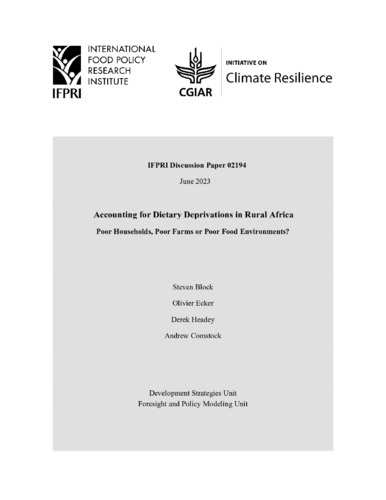Accounting for dietary deprivations in rural Africa: Poor households, poor farms or poor food environments?
Abstract
Agricultural and food policies are increasingly asked to do more to improve the dietary quality of populations in lower and middle income countries (LMICs), especially severely malnourished rural populations. However, the appropriate strategy for improving diet quality remains an open question. Agriculture has traditionally focused on food security and poverty reduction, mostly through investments in staple crops, while social protection programs have also sought to improve diets through poverty reduction. Nutrition-sensitive agriculture programs traditionally emphasize farm-level diversification into nutrient-dense crops and/or livestock, combined with nutrition education. More recently, some researchers have moved beyond the farm to assessthe role of market access and local food environments more generally, though little research has focused on food environments in rural Africa. In this study we explore the determinants of a new and improved measure of household diet deprivation(s) that measure consumption gaps for diets as a whole as well as gaps for individual food groups. Using national datasets for rural Nigeria, Ethiopia and Tanzania, we conduct a “racehorse” regression analysis that reveals strong support for the role of wealth in reducing dietary deprivation, evidence that livestock diversification is important but not crop diversification, and indications that local farming systems are also strongly associated with dietary outcomes, but market access indicators are not. While more research is needed, we conclude that the evidence supports strategies that combine income/wealth enhancement objectives with livestock diversification where possible. Evidence on the linkages between food environments and diet quality in rural areas of LMICs is currently too limited and warrants further research of the observational and experimental variety.

